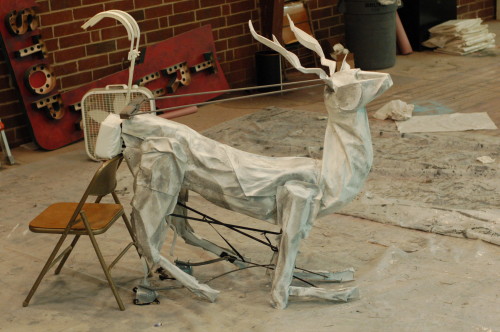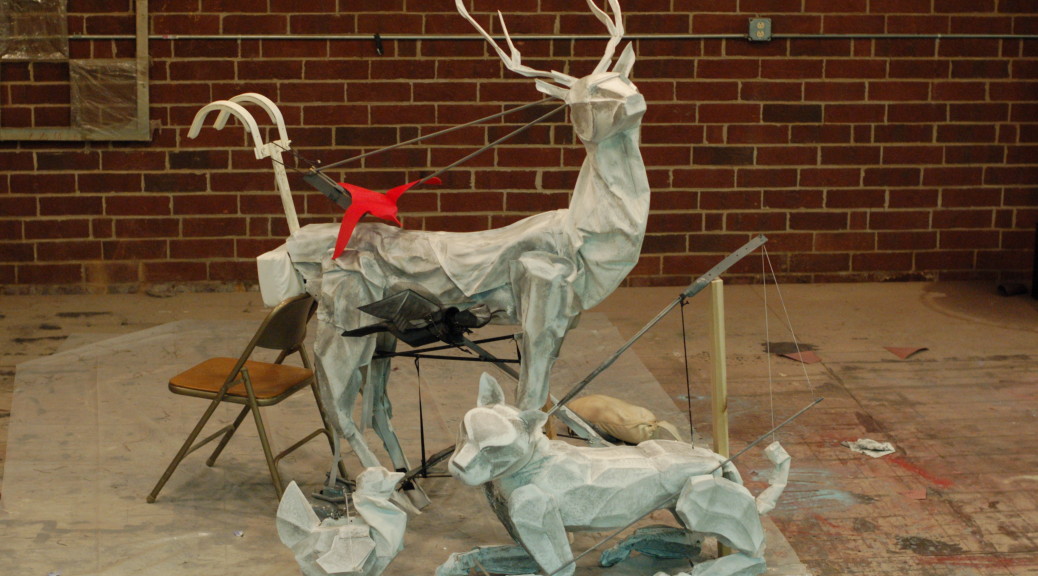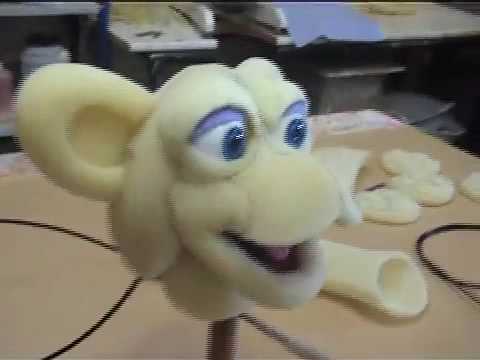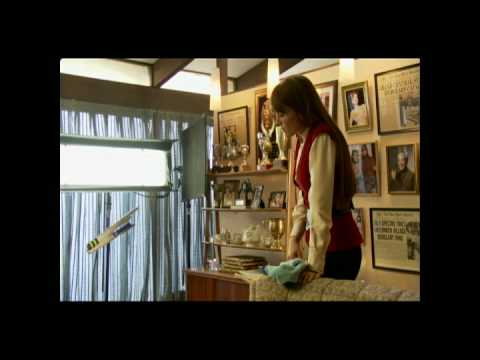The majority of my time this past autumn was spent working on puppets for Triad Stage’s production of “Snow Queen”. The play is an original retelling of the Hans Christian Anderson tale, set in the Appalachian Mountains with bluegrass music.
The animals (other than the two birds) were designed to look like they were constructed from cut and folded paper. Bill Brewer, the puppet designer, came up with the range of motions he wanted the puppets to have. Each puppet only had one puppeteer to operate it, which is tricky when the puppets are this large and manipulated by actors rather than trained puppeteers. We worked together to distill their movements down to the simplest motions so their moments on stage would be evocative and magical.
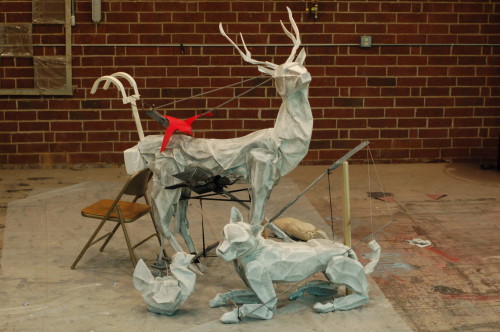
The stag had the most logistical challenges, so I began work on him first. The main challenge was that the lead actress rides him around on stage, so it needed to support her weight and remain comfortable for the operator to carry her while still working the puppet. I used a marching band snare drum harness to attach the puppet to the operator. We used these out at the Santa Fe Opera this past summer for a similar purpose, so I already knew it was the best option for comfortably distributing the weight over the operator’s body while keeping a strong and stiff connection to the puppet.Â
You can watch the evolution of the skeleton and mechanisms in the video below:
It took me about a month and a half to get the movement right (I was working on the other puppets at this time as well, and we produced a whole other show within that time frame as well). My goal was to have this skeleton ready for the first week of rehearsal so the actors could begin working with it and discovering what it could do.
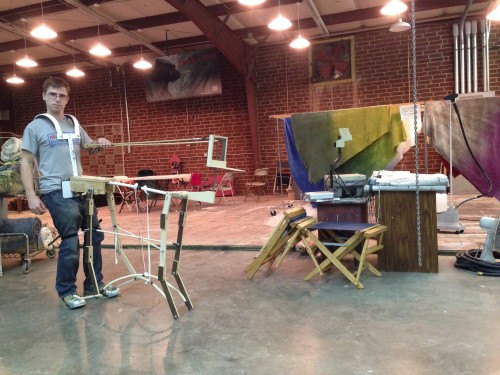
When the puppets were not being used in rehearsal, I took them back to start adding the three-dimensional bodies. It was vital that the actors used the puppets in rehearsal; the evolution of the puppet scenes was shaped dramatically by the discoveries of how the puppets moved and reacted.
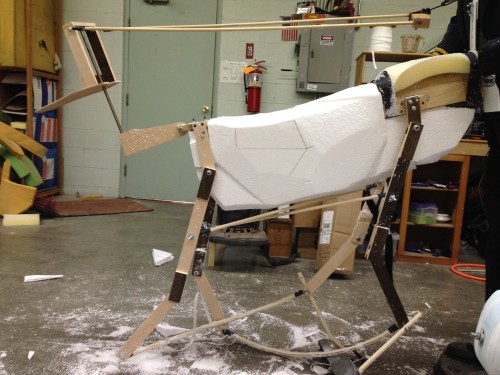
For the solid parts, I attached chunks of EPS foam and carved them into shape.
To get the “folded paper” appearance, I laid some pieces of Wonderflex over top of the foam. Wonderflex is a plastic sheet which becomes formable at a very low temperature; you can let it drape or fold it like fabric, and when it cools, it retains that shape.
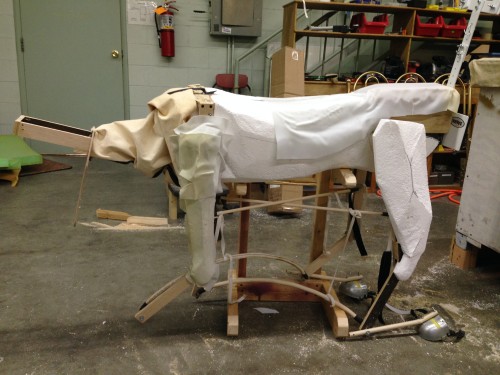
For the neck, I needed a much more flexible material, and after some experimentation, found a type of fabric which matched the appearance of the rest of the stag, but would allow the puppet to retain its full range of motion.
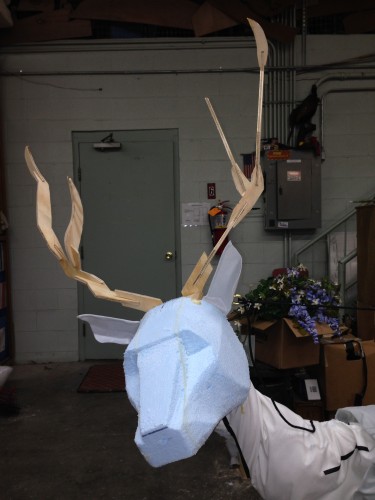
The head itself was carved by Brewer. We played around with a few designs for antlers, and ended up making them out of several interlocking segments. The ears were cut and shaped from more Wonderflex.
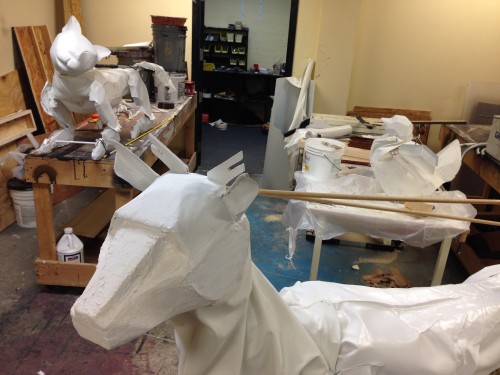
By that point, we were already loading into the theater, so the long task of filling, sanding and priming was done there. After  base-coating the puppets to a uniform white color, they were shaded with grey and silver paint to accentuate the flat plains and folds. Most of this was done by Howard Jones, the scenic designer on the show.
